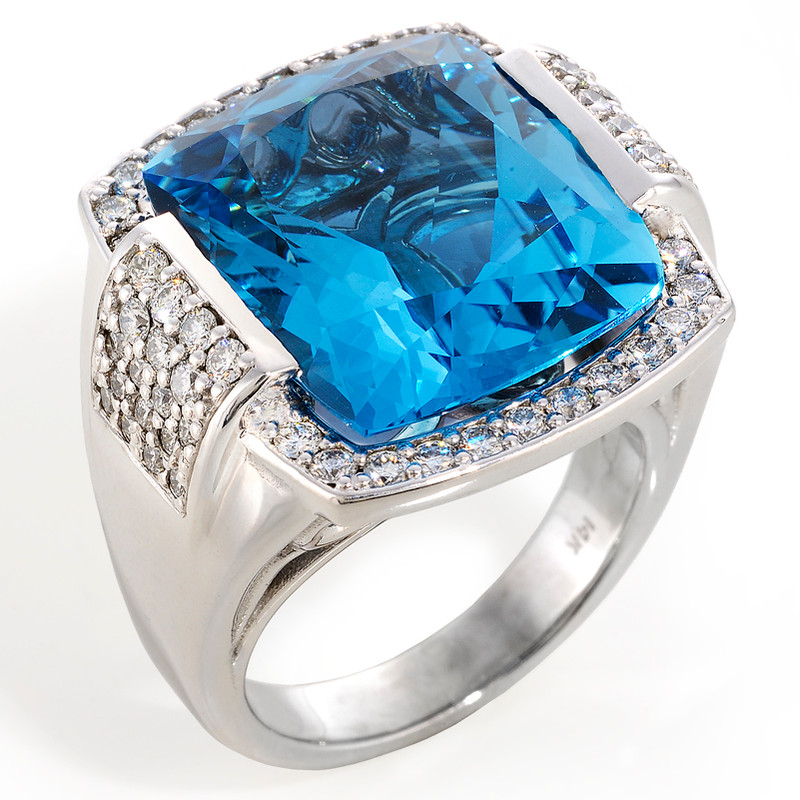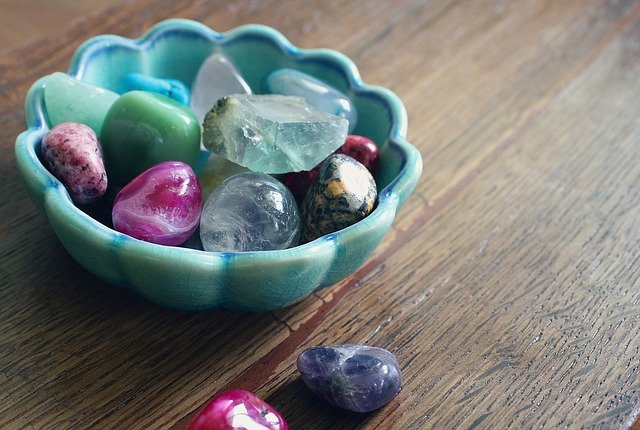Precious Gemstones vs Semiprecious Gemstones
You may occasionally come across the terms ‘precious gemstone’ or ‘semiprecious gemstone’ and wonder about the difference. I’ll provide some background on the terms and then share my thoughts on why I feel they are obsolete and should no longer be used. For background, you may want to start by checking out our blog answering the question: "what is a gemstone?"
HOW DID THE TERMS PRECIOUS AND SEMIPRECIOUS COME ABOUT?
2000 years ago, students of gemology classified gems purely by color. For many centuries, ruby and red spinel were classified as the same gemstone because they were similar in color. In the 14th century, the Imperial State Crown of England featured a 170 carat gemstone known as the Black Prince’s Ruby, which is actually a red spinel. In the following photos, the earrings contain rubies and the ring's center stone is spinel.
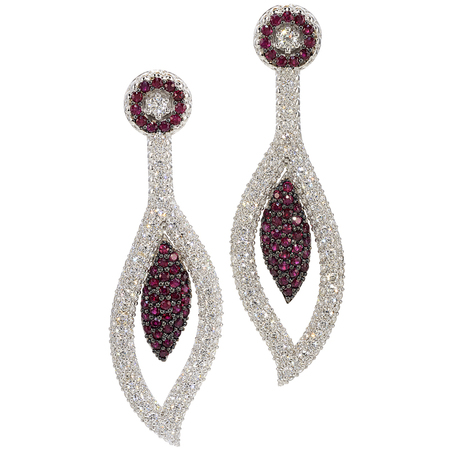
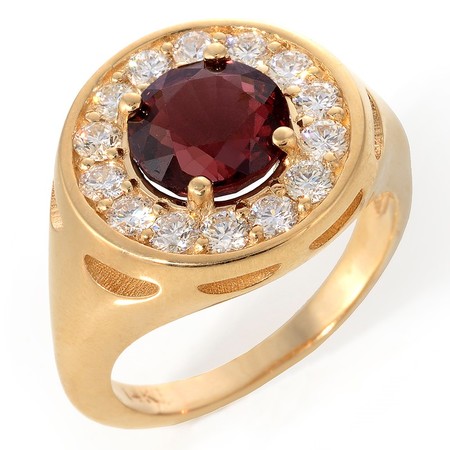
Over time, gemologists discovered the two gemstones are chemically different. In the mid-1800s, as more was being learned about the differences among gemstone varieties and species, they were divided into two categories: precious and semiprecious. Four gemstones were designated as precious; diamond, ruby, sapphire and emerald. They were the most expensive and sought after stones at the time. All other varieties and species of gems were classified as semiprecious. As time passed, these designations grew in popularity, becoming ingrained in the jewelry trade and are still used by some today.
WHAT’S WRONG WITH THESE TERMS?
According to Webster’s Dictionary:
Precious is defined as: “of great value or high price”
The prefix semi means: “to some extent; partial; incomplete; having some of the characteristics of”. Semisweet chocolate is ‘slightly sweetened’ and something that’s semiautomatic is ‘not fully automatic’.
Semiprecious is defined as a “gemstone that is of less commercial value than a precious stone; fairly valuable; having somewhat less value than a precious stone.”
So, using a similar train of thought, if 150 years ago there were only 3 ice cream flavors, chocolate, vanilla and strawberry and 90% of total ice cream sales were chocolate and vanilla, could they have been designated ‘delicious ice creams’ and strawberry ‘semidelicious ice cream’? As the numbers of flavors increased over time, would all the new flavors (including my favorite, Cherry Garcia) be lumped into the category of ‘semidelicious ice creams’?
WHAT’S THE CURRENT SITUATION?
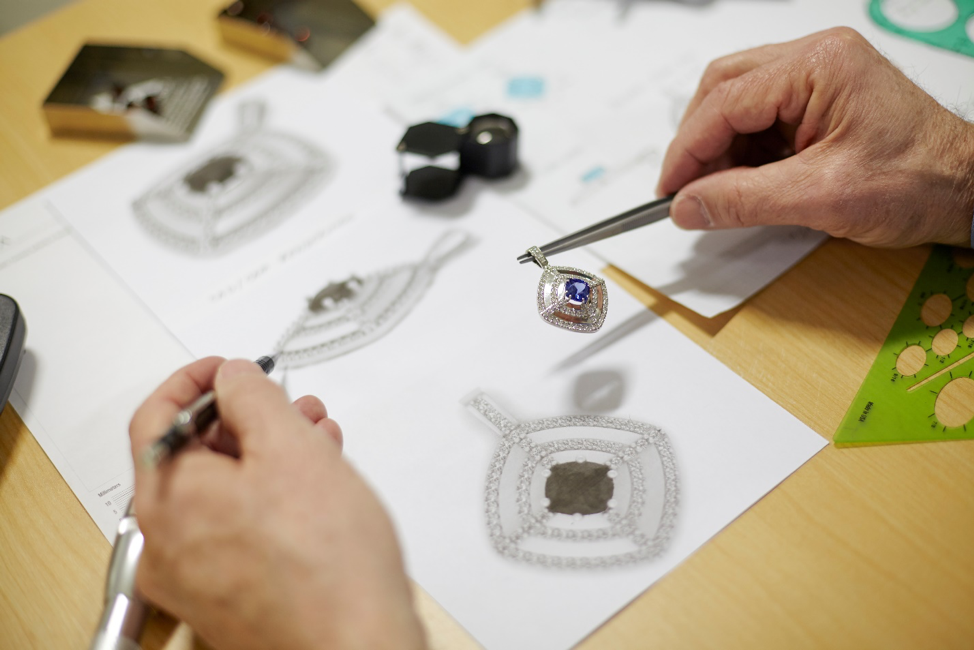
What does ‘precious’ mean in today’s gem market? Does it mean some combination of valuable, rare, beautiful or desirable? Are diamonds, emeralds, rubies and sapphires more valuable, rare, beautiful or desirable than all the other gemstones on the market? Some of the problems with calling some stones "precious" based on these factors include:
Value – When looking at 2019 wholesale asking prices for a sampling of the more popular gemstones used in jewelry, diamond and ruby lead the pack in terms of price per carat. Fine grade ruby and blue sapphire are difficult to find, with lower quality goods in adequate supply. In total number of carats sold, blue sapphire remains the top seller in the world’s colored stone markets. However, Paraiba tourmaline and Alexandrite have surpassed blue sapphire and emerald in cost per carat for fine material. Cuprian tourmaline and some black opal are comparably priced to fine emerald. This clearly shows that so-called ‘semiprecious’ gemstones can compete price-wise in the same market space as at least 2 of the ‘precious’ gemstones.
Rarity - Many "semiprecious" stones are also more rare than precious stones. Red beryl, tanzanite, demantoid and tsavorite garnet and numerous other gems are all found in a fewer number of locations and produced in smaller quantities than any of the "precious" stones. They are incredibly rare in comparison, but that does not earn them the term "precious."
Beauty and Desirability - Beauty and desirability are both properties that are based upon the opinion of the observer. Each year I attend the American Gem Trade Association GemFair in Tucson, Arizona to source a portion of my colored gemstone needs. I look at thousands of colored gemstones and carefully inspect hundreds of individual stones. When I look at colored gemstones, the main factors I look for is vibrancy of color and how the stone’s cut and finish displays the color. While I’ve seen some beautiful so-called precious stones, I would put some garnets, tourmalines, opals, spinels, Oregon sunstones and zircons up against any of them for use in my jewelry. On the other hand, I’ve seen some lower graded ‘precious’ gemstones that I wouldn’t put in a jewelry piece of mine if you gave them to me.
CONCLUSION
In my opinion, all natural gemstones are precious! I'm not alone in thinking this. GIA also teaches this. The terms "precious and semiprecious" are outdated, arbitrary and meaningless. In the early days of gemology, when the understanding of properties of different species and varieties of gemstones was in its infancy, these terms provided buyers and sellers some framework for guidance. With today’s scientific study of gemology and the ability to retrieve information quickly, we can easily track and make educated gemstone purchase decisions without such simplistic and misleading terms as precious and semiprecious. For those reasons, the terms should be eliminated. When buying gemstone jewelry, you should focus on the gemstone’s beauty and appeal, how it suits your intended use and if it is priced in a manner you’re willing to pay. These considerations are infinitely more meaningful that a gemstone’s designation as ‘precious’ or ‘semiprecious’.

